Background
Gorse (Ulex europaeus) covers thousands of acres of land on the slopes of Mauna Kea in a region known as Humuula. This thorny shrub, capable of surviving subfreezing temperatures, has colonized open pastures and blanketed the region. Much of this land is managed by the State of Hawaiʻi, Department of Hawaiian Home Lands (DHHL). Many attempts have been made to control gorse. These include shading, spraying herbicide, and bulldozing. Gorse regenerates prolifically, however, so without constant upkeep and outplanting of trees and shrubs to suppress it through shading, it is nearly impossible to get rid of gorse. Nonetheless, long-term monitoring of gorse invasion in New Zealand suggests that, without disturbance that stimulates gorse regeneration, the natural life span of gorse is around 30 years, and the shrub will not reproduce if it is shaded by trees and shrubs that grow into declining thickets. This suggests that outplanting into gorse thickets may be a long-term strategy to diversify invaded areas and eventually replace gorse.
To test this in Hawaiʻi, we developed an experiment in collaboration with the DHHL to plant koa (Acacia koa), sugi pine (Cryptomeria japonica), and redwood (Sequoia sempervirens) alongside gorse to increase land productivity and biodiversity. A plan was implemented to crush rows into the field of gorse using a bulldozer. Afterward, the trees were planted in these rows, with or without herbicide sprayed to suppress gorse regrowth. The hope is that these trees will establish themselves and overtop the surrounding gorse before it inevitably grows back in.
One obstacle that may need to be overcome is frost damage to koa seedlings. It is well documented that koa seedlings suffer from frost damage when exposed to sub-freezing temperatures. The experiment is at 2000 m above sea level and during clear winter nights the temperatures can drop below freezing. A previous study by Tropical HTIRC PhD student Dr. Kyle Rose found that decreasing canopy openness increases absolute minimum temperature and reduces the number of minutes below freezing (Rose et al. 2020). Unfortunately for this plot, there are no larger trees to provide canopy cover to protect seedlings from frost damage. This is one reason why testing the temperature in this area is important as it can tell us whether frost protection measures need to be taken and if the surrounding gorse thicket could insulate the seedlings. The design of the planting also allowed gorse to protect the seedlings from ungulates (there are feral sheep and cattle in this region that will eat koa). To prepare the site, alleys were bulldozed into the gorse, crushing the shrubs but not clearing down to the soil. The planting site is surrounded by thick gorse, with only the openings of the alleys needing to be fenced to keep out feral sheep and cattle. Neither of these creatures will make the trek through the gorse. So, the hope is that the gorse will help these seedlings reach adulthood by regulating temperature and keeping out unwanted animals.
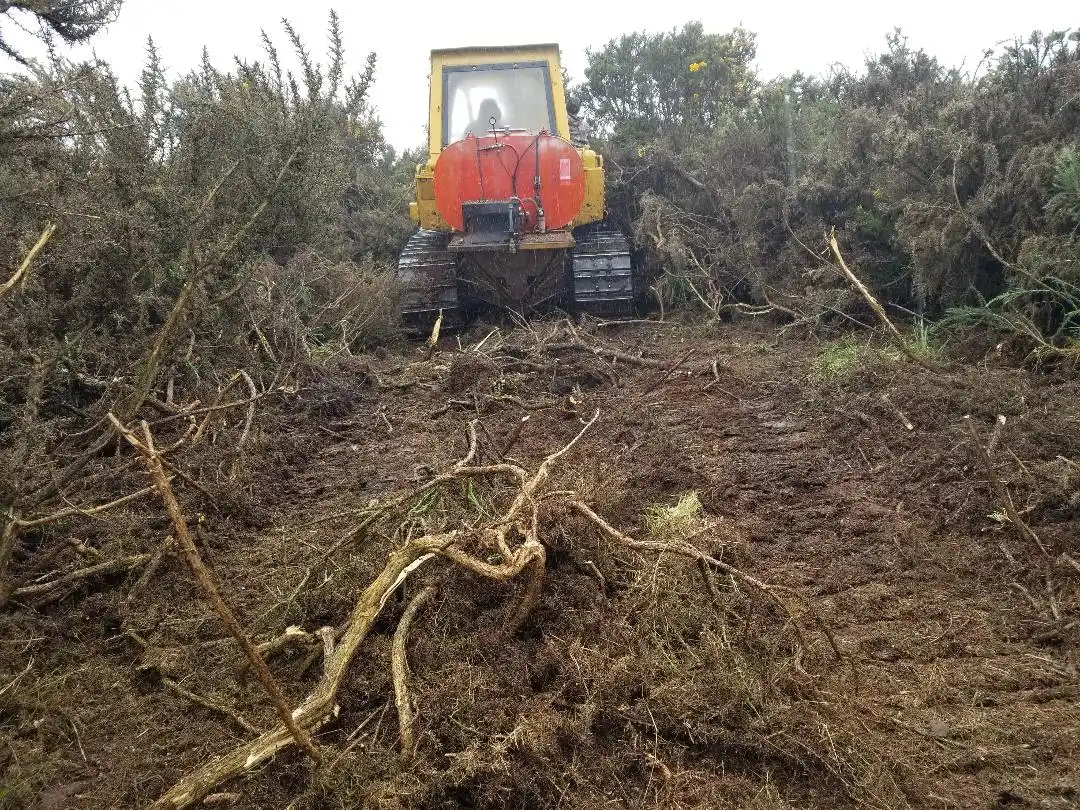
Project Objectives
The main objective of the gorse row project is to increase the biodiversity and productivity of Humu‘ula. This is a part of the DHHL master plan for this area and is meant to help the environment and the Hawaiian people. To know if the gorse row project is truly productive, a secondary objective is to test its effectiveness. Observing the survival rate, growth rate, gorse regrowth rate, effectiveness of herbicide, and internal temperatures will give the DHHL a better understanding of the success of this methodology of re-establishing koa. It will also prove whether this method can be used on a larger scale across Humu‘ula.
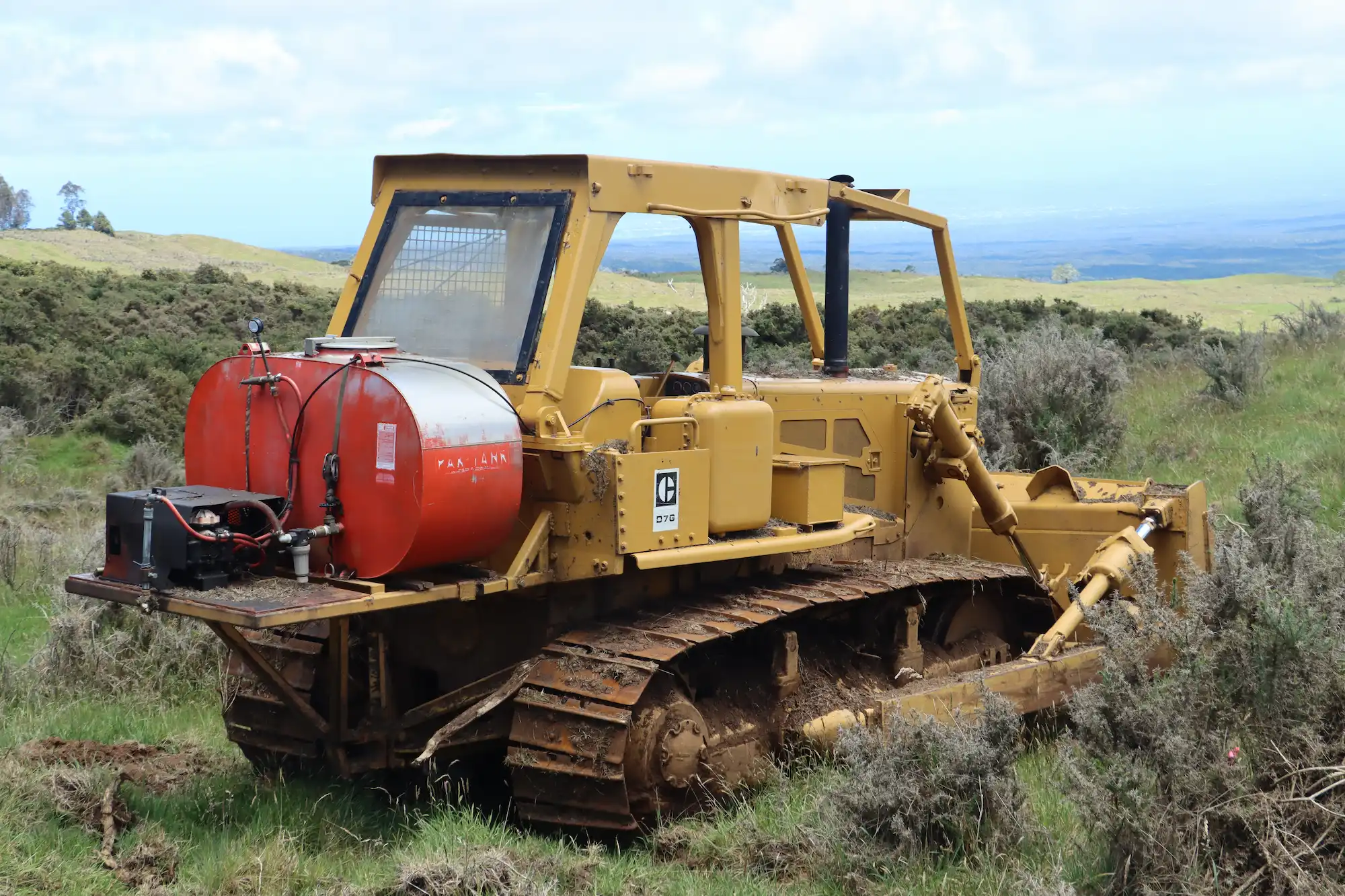
Approach
In May 2022, the Department of Hawaiian Homelands (DHHL) contracted a bulldozer operator to crush 8 rows, each 150 m long and approximately 5 m wide. (Figure 1). After this was done, half of the rows were treated with herbicide (Garlon®, active ingredient triclopyr, plus Telar®, active ingredient chlorsulfuron) to see if the herbicide would reduce regrowth (Figure 2). Inside of the rows, koa, sugi pine, and redwood were planted in varying distances and combinations (Figure 3). To gauge the temperatures inside of the row, 20 Hobo MX2202 temperature gauges were placed throughout the rows in unplanted control plots and programmed to take a reading every minute (Figure 4). Five Hobo sensors were placed across the row in each of four plots. One sensor was placed outside of the row as a control; one was placed in the middle of the row; two were placed at 1.0 and 1.5 m, respectively, from the center sensor to align with where the seedlings are planted and the edge of gorse and one was placed 3 m into the gorse row. (Figure 5). Sensors were placed at 1 m height in 2022-2024 and 0.75 m height in 2023-2024. Data was taken over the two winters (December to April) during 2022-2023 and 2023-2024. After data were collected, the approximately 6 million temperature readings were analyzed using “R” to display the average temperature at each sensor location in the gorse as well as the minutes spent below freezing. For koa seedlings, heights were taken each year to calculate the annual growth. Drone images were taken every 6 months to visualize regrowth of the gorse. Gorse regrowth in the rows was also measured at two years using five randomly placed 1-m2 subplots in each plot.
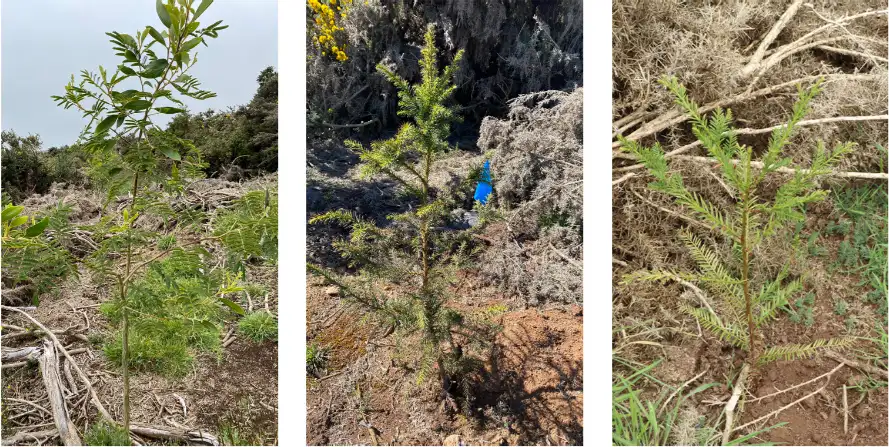
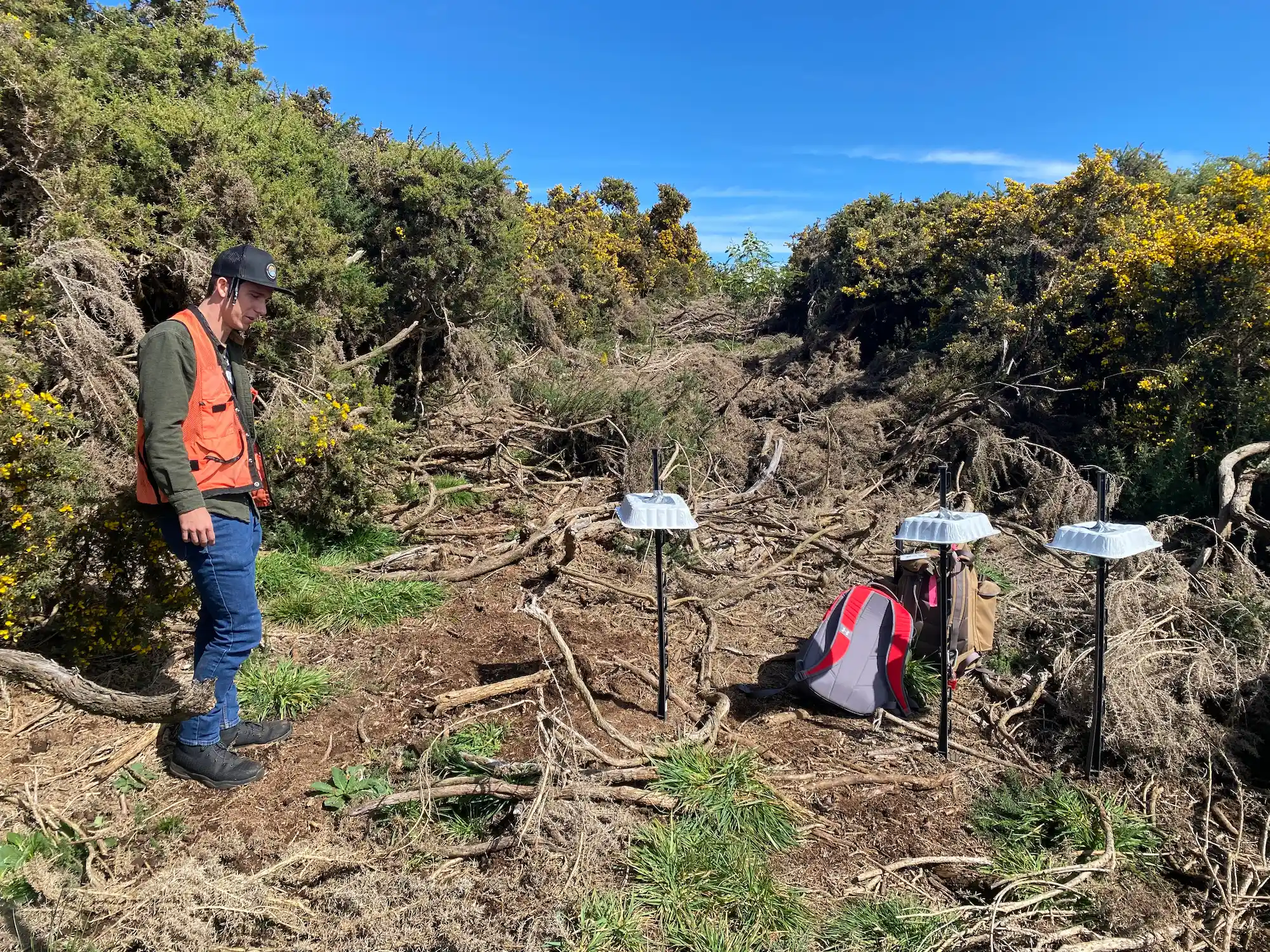

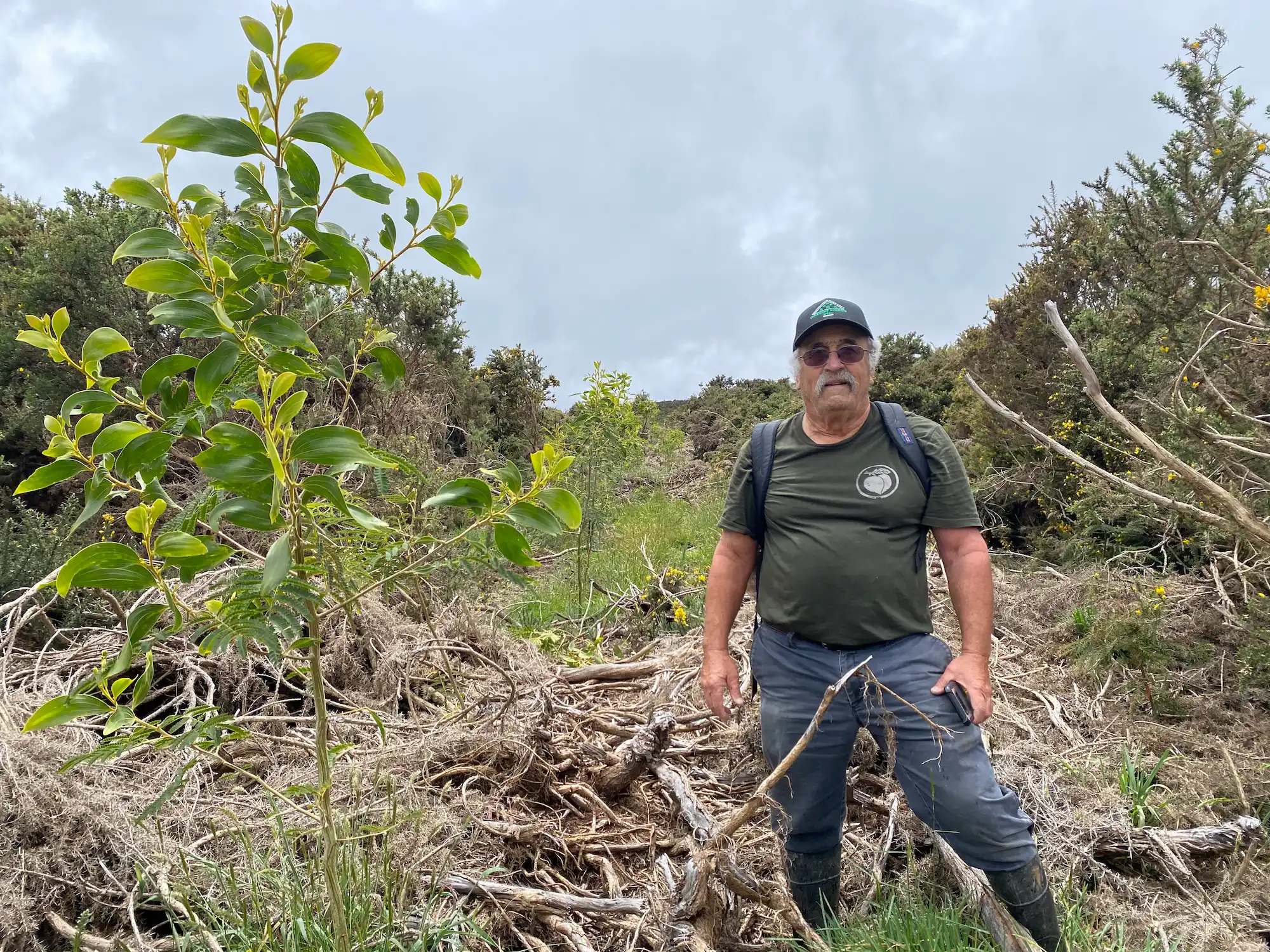
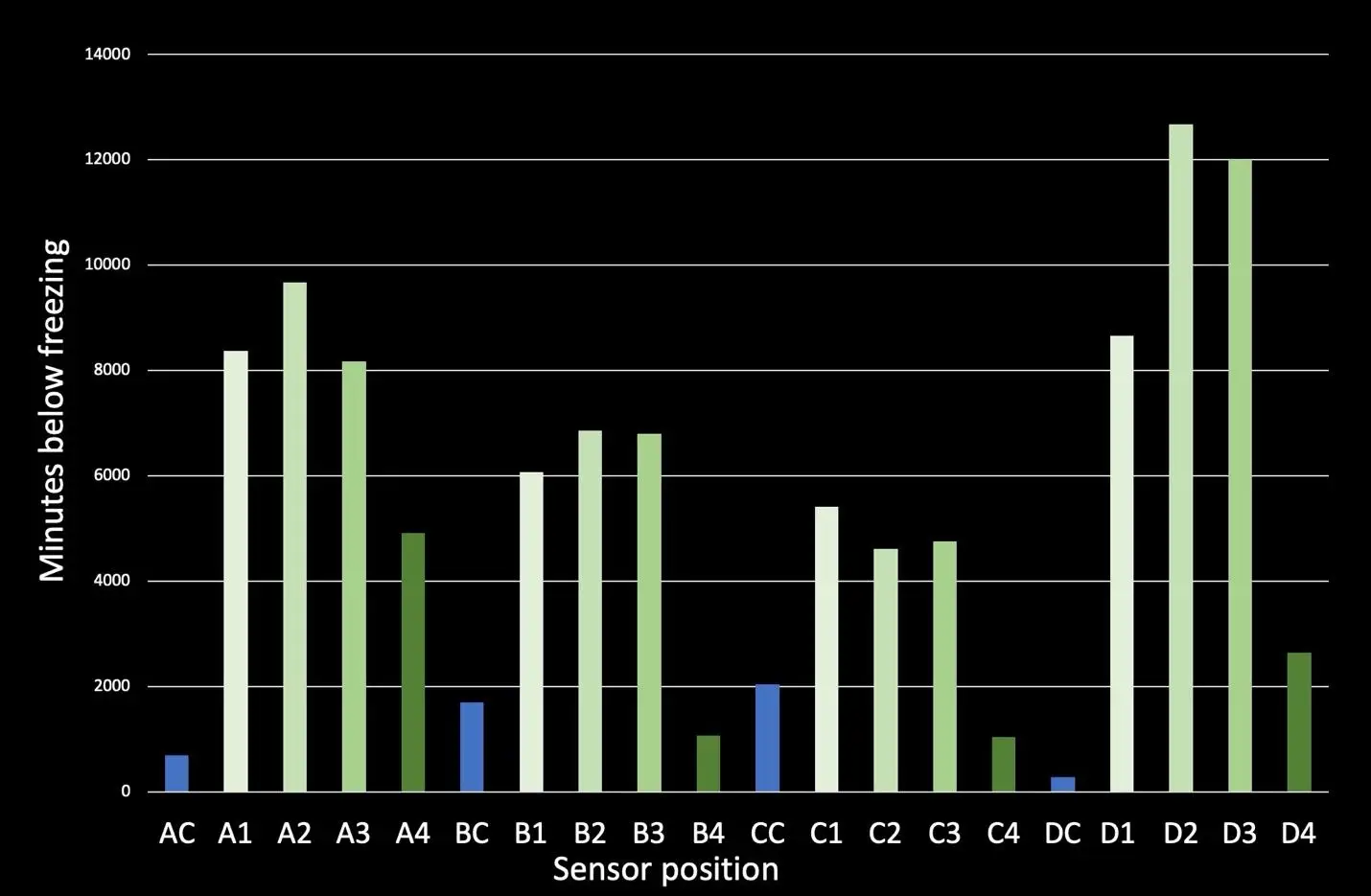
Key Findings
Out of the 495 koa seedlings planted, 404 survived the first year, a survival rate of 82%. These trees grew an average of 75 cm during their first year in the gorse rows (Figure 6). Using the drone imagery, we were able to calculate that every 6 months, about 5% of the row is retaken by gorse. However, as the gorse seedlings re-establish themselves, this number is expected to grow exponentially. After two years, we found no significant differences for gorse regrowth between rows with or without herbicide (14% vs. 19.7% gorse cover, respectively), which may have been associated with rainfall after herbicide application. Few plots had any regeneration of native plants, and the only native plants found were ferns and the native raspberry (Rubus hawaiensis).
During the first winter, there was no significant difference between gorse coverage and temperature. Out of the 415 sub-zero readings recorded, none of them were in the control/open field. It appeared the row itself has a greater effect on the temperature than distance from the gorse. However, this was a fairly warm winter with relatively few moments being spent below freezing. During the second winter, there were many more nights spent below freezing. This data suggested that the “controls” were warmer than anywhere in the gorse crush alleys (Figure 7). We will monitor this data further as the gorse continues to re-establish in the alleys. There was minor evidence of sheep incursion into the gorse rows at one point but little visible evidence of feeding on koa seedlings after the fence was made sheep-proof.
Overall, due to the high survival rate and growth rate, it seems as though the gorse rows are doing a good job of protecting the seedlings and that it may be a viable option for large scale koa planting in gorse dominated areas.
References
Rose KM, Friday JB, Oliet JA, Jacobs DF (2020). Canopy openness affects microclimate and performance of underplanted trees in restoration of high-elevation tropical pasturelands. Agricultural and Forest Meteorology, 292, 108105.

